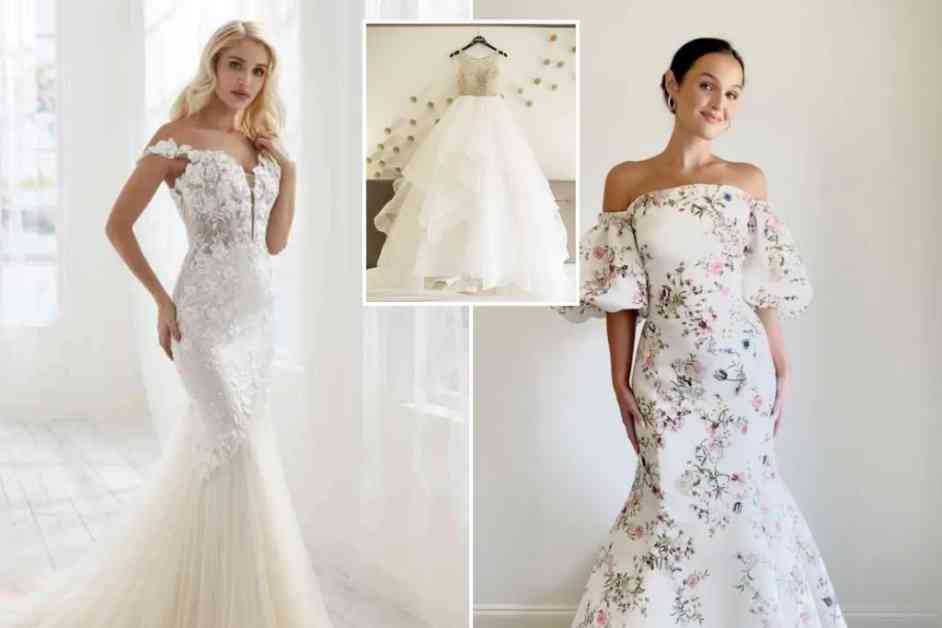After the wedding, many brides are faced with the age-old question: what to do with their beloved wedding dress? The sentimental value of these gowns often clashes with the practicalities of storage, preservation, or disposal. This dilemma has led to a rise in the trend of buying and selling secondhand wedding dresses, a movement driven by sustainability, affordability, and the desire to share the love.
Melissa Martel, the operations manager of Nearly Newlywed, an online wedding dress resale site, has witnessed this shift firsthand. She noted that brides today are more open to purchasing pre-owned dresses, recognizing the benefits of sustainability and cost savings. Selling a wedding dress not only allows brides to recoup some of their expenses but also gives them the opportunity to pass on their cherished gown to another bride who will appreciate it just as much.
The availability of secondhand dresses online has made it easier for brides to explore this option. However, the inability to try on the dress before purchasing can be a drawback. Corinne Pierre-Louis, a bridal and editorial stylist, advises brides to be prepared for potential imperfections and additional costs for cleaning, restoration, or alterations.
Ronnie Rothstein, the CEO of Kleinfeld Bridal and Kleinfeld Again, emphasized the importance of setting a budget when shopping for a pre-owned dress. By knowing what you can afford, you can narrow down your options and focus on dresses that align with your vision for your big day. Rothstein also encouraged brides to consider dresses that may be slightly larger than their typical size, as wedding gowns can be altered to fit perfectly.
When shopping for a secondhand dress, understanding bridal sizing is crucial. Julie Sabatino, a bridal stylist, highlighted that bridal sizes often run smaller than regular clothing sizes. Paying attention to key measurements like the bust, waist, and hips can help brides find the perfect fit, especially when shopping for vintage gowns.
Before making a purchase, Pierre-Louis recommends that brides do their homework. Researching the original designer and style of the dress can provide insight into its value. Additionally, examining the dress from all angles, including close-ups of any wear and tear, can help avoid surprises upon arrival.
Reading the description thoroughly is another important step in the buying process, according to Martel. Many buyers overlook this crucial detail, which can impact their overall satisfaction with the purchase. Understanding the condition of the dress and any potential flaws is essential to making an informed decision.
In addition to online options, brides may also find wedding dresses in local thrift shops or vintage clothing stores. Charitable organizations like Brides for a Cause offer the opportunity to donate a wedding dress, with proceeds supporting various nonprofit causes. As with any online purchase, it is important to review the seller’s return policy and terms and conditions before making a final decision.
Once a secondhand dress is purchased, seeking out a professional wedding gown cleaning company is recommended. Companies like Hallak Cleaners and J. Scheer & Co. specialize in wedding dress cleaning and preservation, ensuring that the gown remains in pristine condition for years to come.
In the end, whether a wedding dress is bought, sold, donated, or recycled, the journey of these beloved gowns continues. Each dress carries with it a unique story, connecting brides past, present, and future in a shared celebration of love and commitment.










